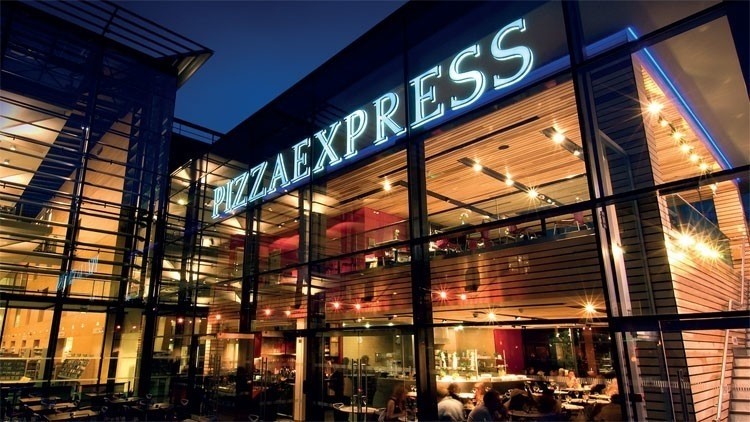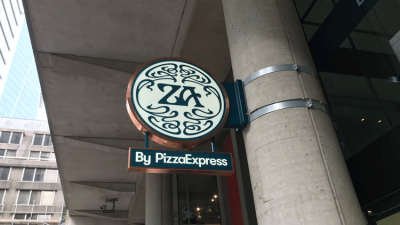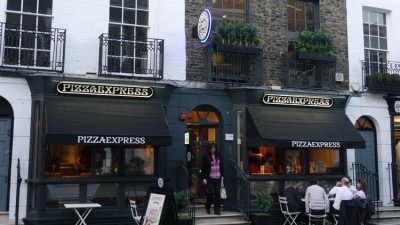The Lowdown: PizzaExpress

But wait, if the business folds, doesn’t that just make it CalzoneEx…?
Stop right there. Anyone who’s been on social media over the past few days will have seen that joke about 200 times already. And perhaps this is not the time for gallows humour.
Sorry. What’s happened then?
Last Friday (4 October), Bloomberg reported that the casual dining chain had hired financial adviser Houlihan Lokey after struggling with “tough trading conditions”. Questions around the viability of the 54-year-old brand last arose back in May, when it posted a pre-tax loss of £55m for 2018. In the same filings PizzaExpress revealed it had debts of £1.12bn, including around £400m from a loan provided by its parent company, the Chinese-owned private equity group Hony Capital (which bought the chain for £900m). Suffice to say, given the number of other high street brands that have been struggling within the UK casual dining sector in the past year, many immediately assumed the worst.
What have people been saying?
Aside from the bad puns, the news led to an outpouring of genuine grief and nostalgia from across the social media spectrum; something that was conspicuously lacking when Jamie Oliver’s UK restaurant group collapsed earlier this year. Ian Dunt, editor of politics.co.uk, lamented on Twitter that PizzaExpress was one of the first proper restaurants he visited when he was a kid; actor Rufus Jones praised the staff, saying “NO waiters wrangle toddlers with better care and empathy than PizzaExpress waiters”; and The Times journalist Esther Webber called for the chain to be nationalised. Food writer Sejal Sukhadwala called for PizzaExpress to be given a Michelin star; writer Rose Prince has written fondly of her first visit to the restaurant as a nine year-old girl; and The Observer’s food critic Jay Rayner said the closure of PizzaExpress would be a serious loss to live music – the first PizzaExpress, which opened on Wardour Street in London’s Chinatown in 1965, assimilated Italian cuisine with live jazz, and that remains a hallmark of the brand. Although regarding Rayner's comments we should probably point out that he does occasionally tickle the ivories at the PizzaExpress Jazz Club in Soho.
So there’s a lot of love for it. How has PizzaExpress responded?
The group initially kept quiet, but on Tuesday evening (8 October) it did look up from the marble counter to post a short video of appreciation for all the support it had received in the last week. If anything, it raised the bad pun stakes: against a backdrop of pizza dough being kneaded it said: “Thanks for the love; it feels good to be kneaded; we’re still making dough.”
Well if that’s the case then surely there’s nothing to worry about…
Making light of the situation with a barrage of hackneyed puns may suggest there’s still plenty of pepperoni to go around. But the fact remains that this is a business in a sector that’s facing strong headwinds in terms of rising costs and competition and the company has struggled to wean itself off the two-for-one voucher deals that were introduced during the last recession in order to keep trade alive. When Jamie Oliver was forced to close his 22 high-street restaurants earlier this year, it led to the loss of approximately 1,000 jobs; by contrast, PizzaExpress currently operates more than 490 restaurants in the UK and employs some 14,000 people.
Is there hope?
There’s always hope, and PizzaExpress has over 50 years of history on its side. But if recent high street closures such as Thomas Cook and Debenhams tells us anything, heritage alone won’t save it. The past year has seen the chain try to adapt its offering, though. In March it began trialling an overhaul of its design and menu at its Oxford Circus site, and has since begun implementing similar changes at a number of its restaurants. That same month it is also took its first steps into the grab-and-go sector with the launch of pizza by the slice concept Za in the City. What these new developments mean in the grand scheme of things, however, is moot. Fundamentally, the underlying problem lies with the group’s high level of debt, which has been shifted around its various private equity owners for the best part of 20 years.
So what next?
We wait. The company apparently doesn’t have to pay off its current debt until 2021, although there is some pessimism in the City about whether it will be able to do this. It seems unlikely the group will follow its peers, including fellow Italian players Prezzo, Carluccio’s and Polpo, and enter a company voluntary agreement (CVA), with some predicting it might instead do a share for debt swap. Like many, we’ll be keeping our fingers crossed for the brand that has undoubtedly done more than any other high street restaurant brand in changing the way people eat.























